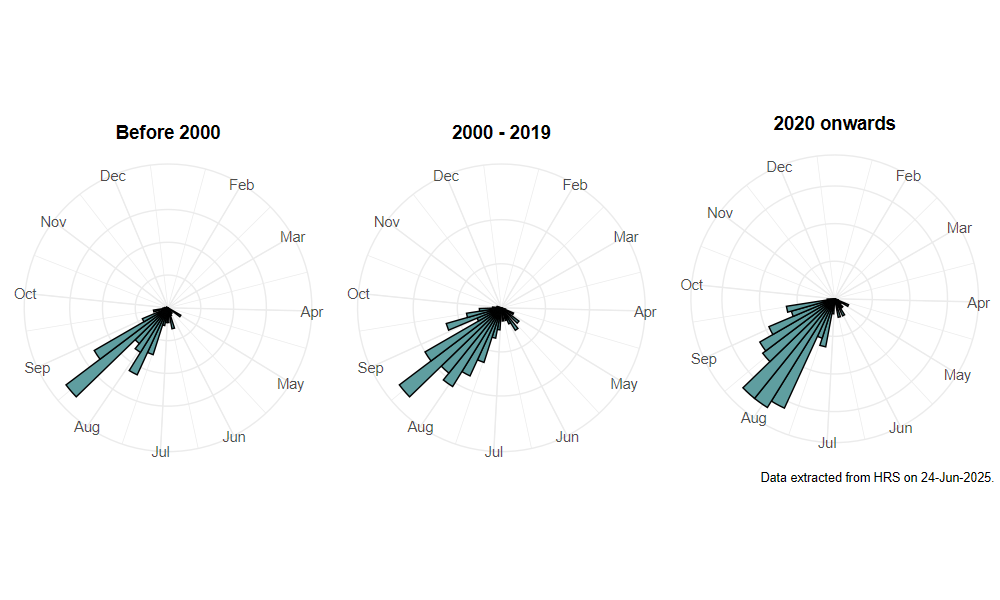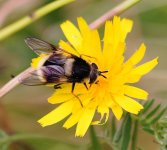Eriozona syrphoides (Fallén, 1817)
Identification
Identification difficulty = 2. ![]()
![]() according to Ball & Morris, 20241
according to Ball & Morris, 20241
Biology
The larva is aphidophagous. It is usually associated with mature conifers (Abies, Picea). In Czechoslovakia, it has been found feeding on the aphid Cinara pineae in established (40 year old) Picea plantations. Adults are usually found visiting flowers along rides or edges in conifer plantations, but they have also been found in deciduous woodland. Males hover in dappled sunshine beneath the canopy.
Flight period
The following plots show the number of unique records per week excluding those reported to be of immature stages.

Status
Lower Risk (Nationally scarce) - Ball & Morris, 20142.
Distribution
This species was first reported from Snowdonia in 1968, but an earlier specimen (from Lancaster in 1957) was subsequently located. Recent records are widely scattered throughout northern and western Britain. The species is probably spreading in conifer plantations and a scatter of southern records, including one from East Sussex, show how this species is slowly advancing southwards.

Trends
The following plots show the Frescalo TFactor vs year and a map of the rescaled frequency (all records) for the species.
